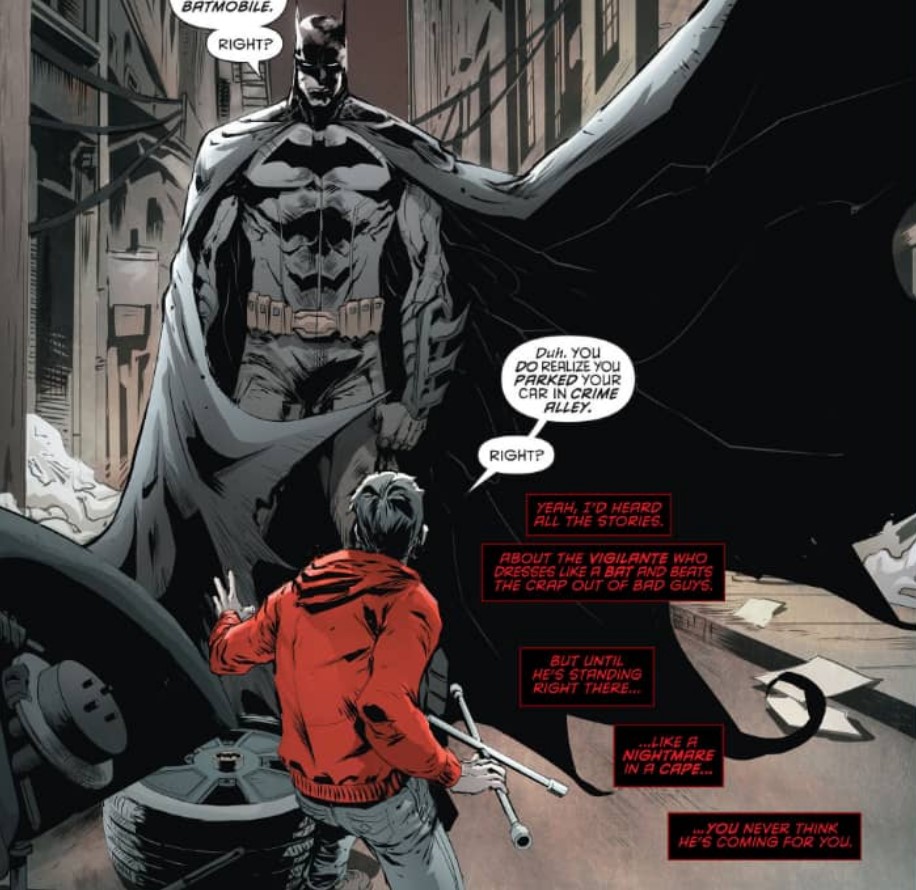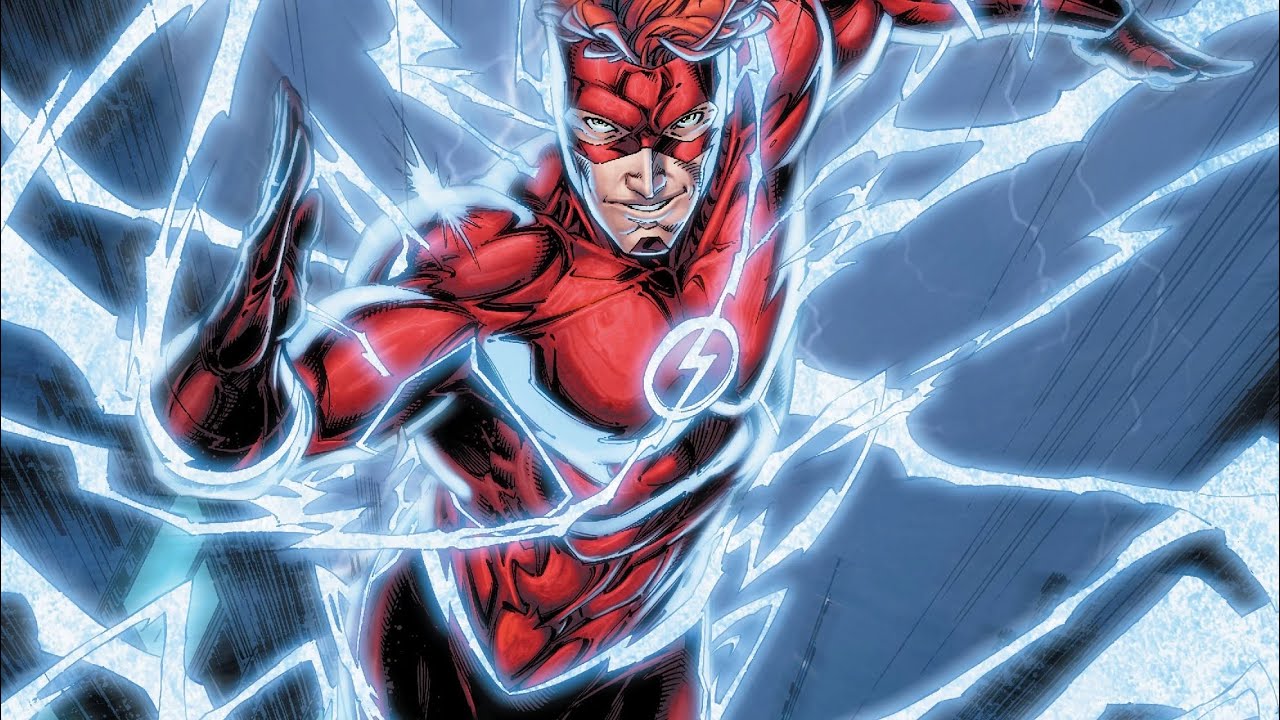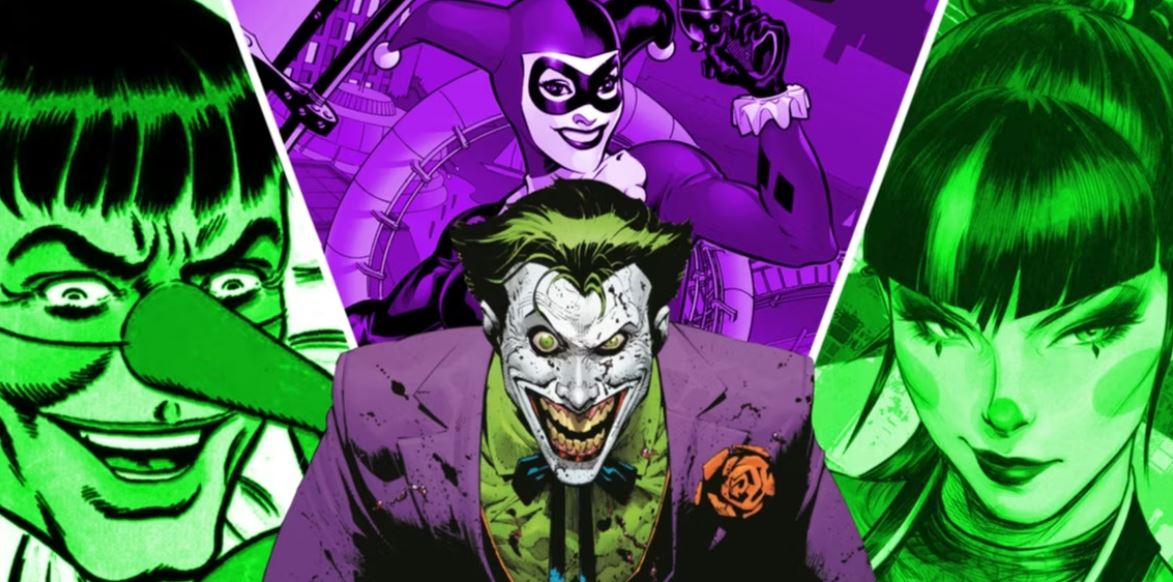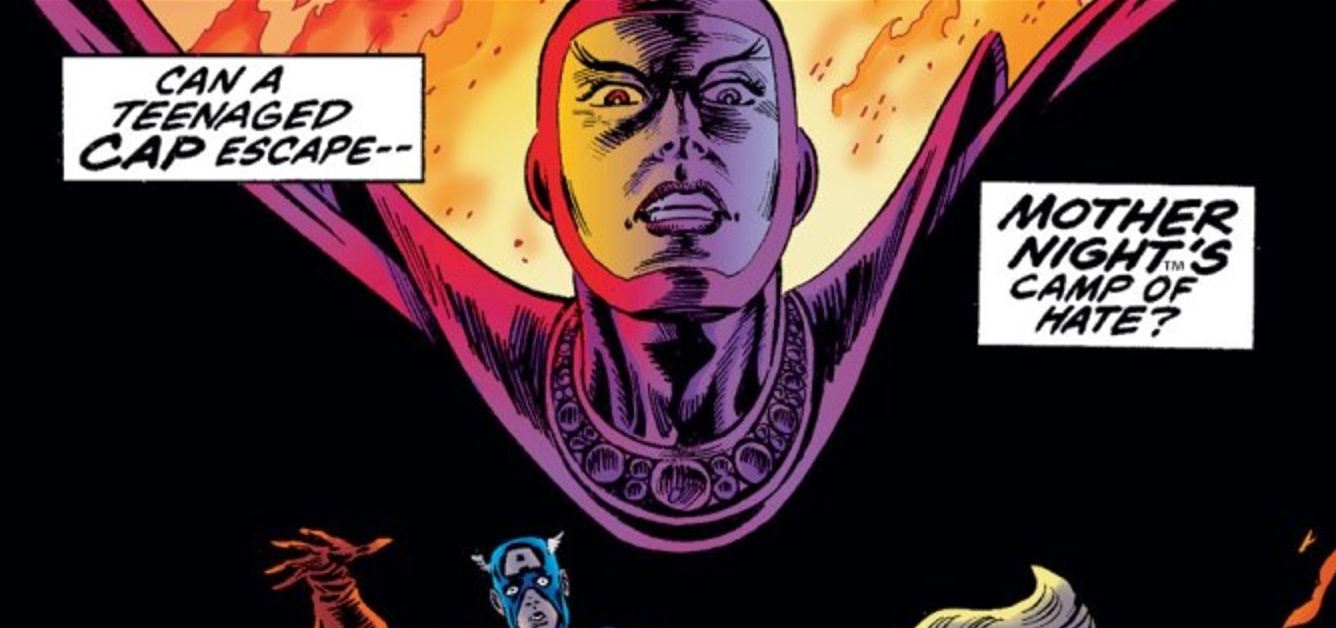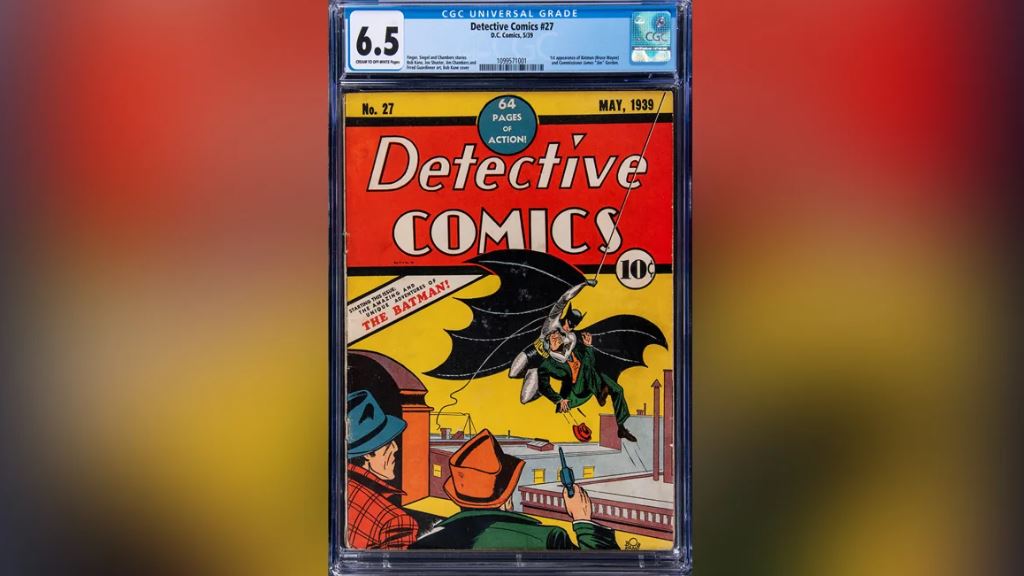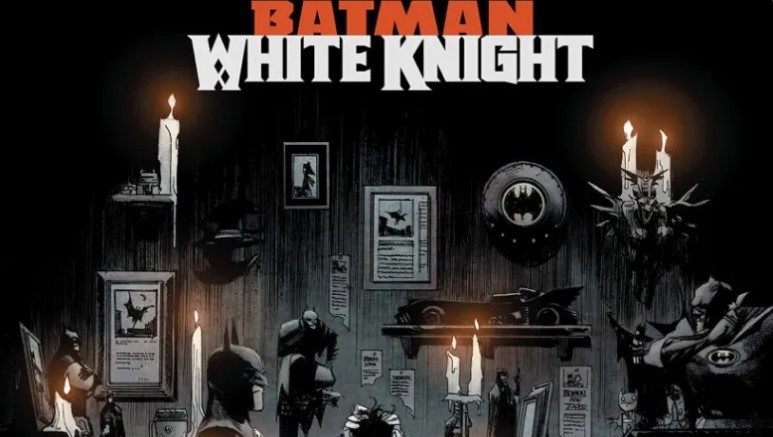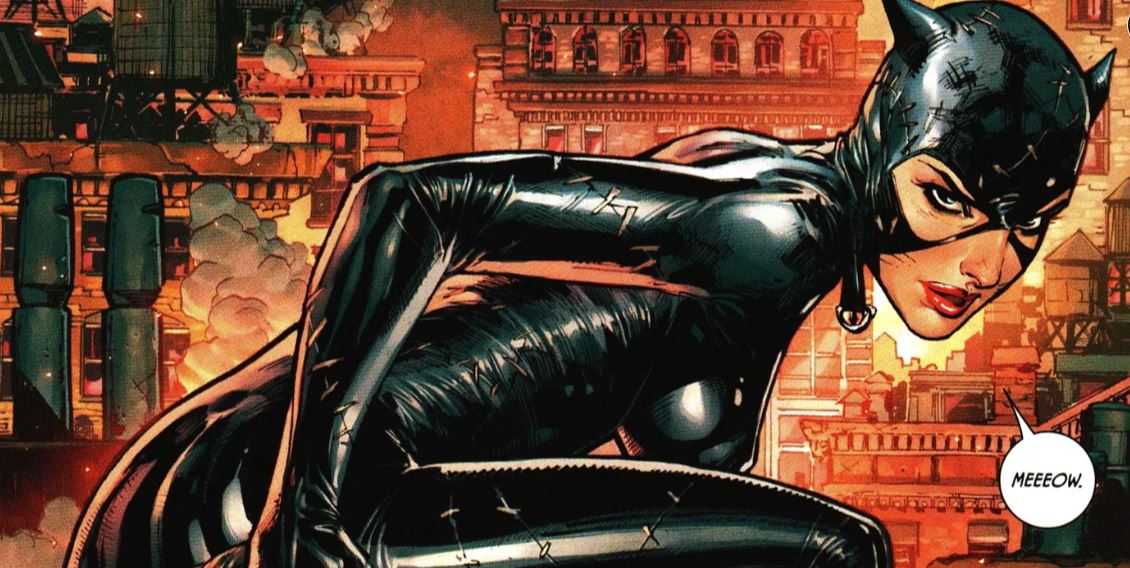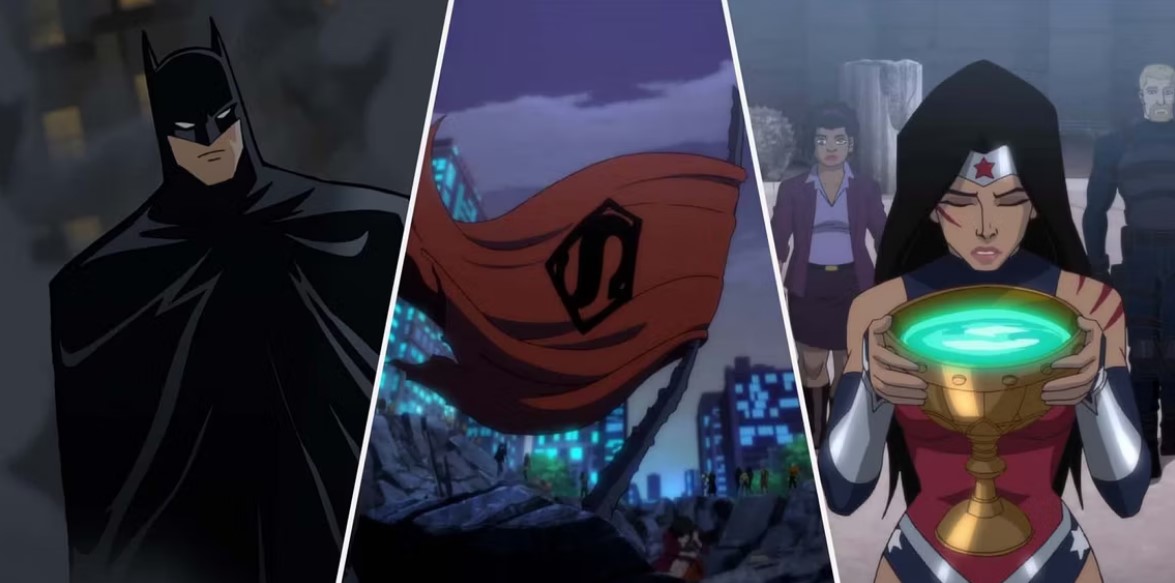Jason Todd is an essential member of the Bat family. He’s the black sheep, the one who walks closest to crossing Batman’s line on a regular basis. But of all the members of the Bat family, he probably has the most confusing and convoluted backstory. His origin has been tweaked, altered and improved multiple times over the years.
As a matter of fact, his first origin is often forgotten in discussions of the character, and for reasons that will become abundantly clear as we discuss it, his post-Crisis origin and the changes made with his resurrection and the New 52.
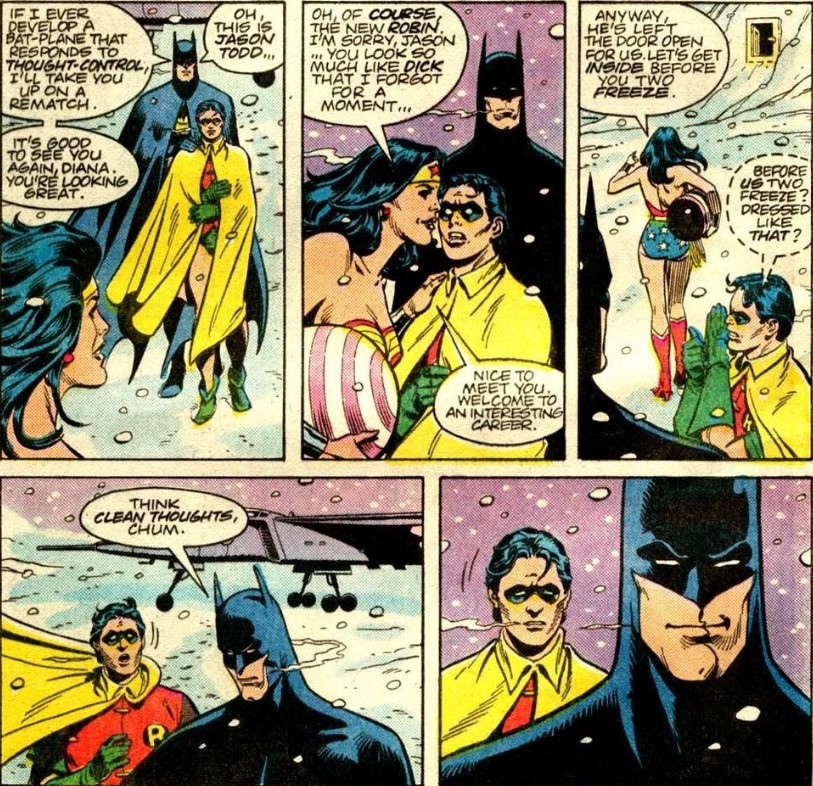
The Pre-Crisis Jason Todd: “Think clean thoughts, chum.”
Jason Todd first appeared in “Batman” #357 as the son of acrobats known as the Flying Todds. When rising Gotham gangster Killer Croc tried to extort money from the Hill Circus, Joseph and Trina Todd offered to help Batman stop Croc, and when they were killed, Batman took in young Jason to help raise him as a new Robin.
Yes, that was the original origin for the second Robin, basically a carbon copy of the origin of the original Robin. In an interview with The Beat, Jason Todd’s co-creator Gerry Conway said he liked the symmetry of the similar origins, and that the loss of the parents was an important part of the origin, but he left writing the Batman titles shortly thereafter, and Jason’s fate was put in the hands of other writers. Jason had some (literal) cosmetic differences, with red hair he would dye black to look more like Robin, but he was pretty much Dick Grayson 2.0.
The early Jason stories had an enthusiastic, youthful attitude, similar to that of the classic ’60s and early ’70s Robin. This is the happy-go-lucky Robin of his brief tenure on the New Teen Titans and who appeared in the legendary ”Superman Annual” #11, Alan Moore and Dave Gibbons’ “For the Man Who Has Everything,” where he meets Superman and Wonder Woman for the first time and makes an observation about Wonder Woman’s costume, leading Batman to scold him, “Think clean thoughts, chum.”
The other major story where Jason was featured after his origin dealt with a new villainess, Nocturna, who became a surrogate mother and adopted Jason in a scheme to get Bruce Wayne to marry her. She did actually care about Jason and Bruce, but Nocturna was always playing various angles. But when she disappeared at the end of “Batman” #391, Jason stayed on with Bruce and was his ward for the next year and change, when the ripples of “Crisis on Infinite Earths” reached the Batman titles and Jason changed forever.
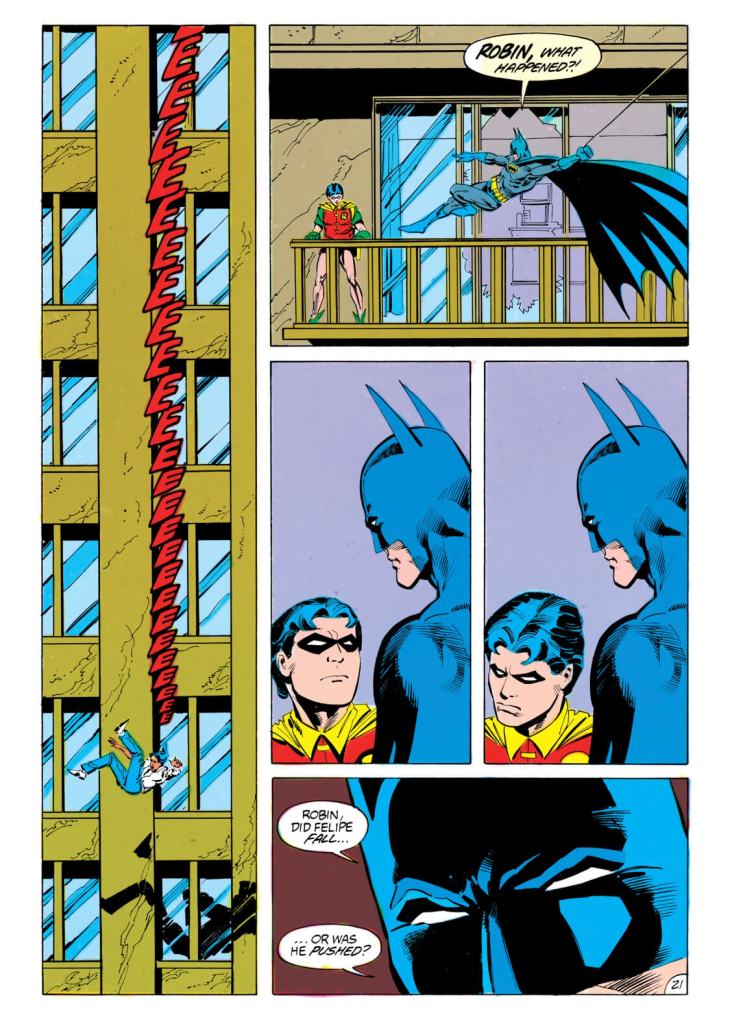
The Post-Crisis Jason Todd: “He slipped.”
The multiverse-reshuffling “Crisis on Infinite Earths” came as legendary writer Denny O’Neil was taking over as the Batman editor, and he was not a fan of the rehashed Jason Todd origin or the fact that Batman had become a “family man” with a paternal relationship with Jason and a steady love life with a then-reformed Catwoman. So when the opportunity to make changes came, O’Neil embraced them.
“Batman” #408, coming right on the heels of “Batman: Year One” in the previous four issues, featured a new creative team, with writer Max Allan Collins, known for his crime novels and the Dick Tracy comic strip, coming on to introduce a new Robin. He was given the name Jason Todd and carte blanche to do whatever he wished.
The Jason that Collins introduced is the one most modern readers are familiar with. This is the Jason who was caught by Batman trying to steal the hubcaps off the Batmobile, and who, after spending some time in Ma Gunn’s School for Boys, a Fagin-like front to train young criminals, was taken in by Bruce. Together, they learned that Jason’s father, Willis, was a cheap crook who was killed by his boss, Two-Face, and while Jason didn’t kill Two-Face in their confrontation, the darkness was creeping in. This was a Robin who was angry, who didn’t always listen to Batman, and who leapt before he looked.
Jason spent the next year and change as a minor player in the Bat titles, appearing as Batman’s sidekick and not given much page time except in issue #416, where he met Nightwing for the first time post-Crisis. That changed with issue #424. People had not taken to this new version of Robin, and series writer Jim Starlin decided to push things to the edge. In “The Diplomat’s Son,” Jason saves a young woman from her abusive boyfriend, only to learn the man is the titular diplomat’s son, and thus has diplomatic immunity. This infuriates Jason, even more so when they can’t get the son arrested for drug trafficking. When he finds the young woman has hanged herself to escape her abuser, Jason races off. Batman arrives at the man’s high-rise apartment building just to see him fall to his death. When he asks Jason what happened, Jason says, “I must have spooked him. He slipped.”
While this story must have been put to bed long before “A Death in the Family” was conceived to start two issues later, Jason probably killing a man didn’t help his chances when the fan vote started. Only three issues later, when fans were given the choice to either kill or spare Jason, they chose to let him die. So in “Batman” #428, it was revealed the Joker had killed Robin.
For those who have come to comics in recent years, after Jason came back from the dead, and haven’t read comics from the period between his death and resurrection, you don’t realize how huge a deal this was. This became the second most defining event in Batman’s history, after the deaths of his parents. The memorial to Jason Todd appeared as a visual focus in the Batcave more than any other object, and Jason’s death haunted Bruce more than anything else. It was momentous.
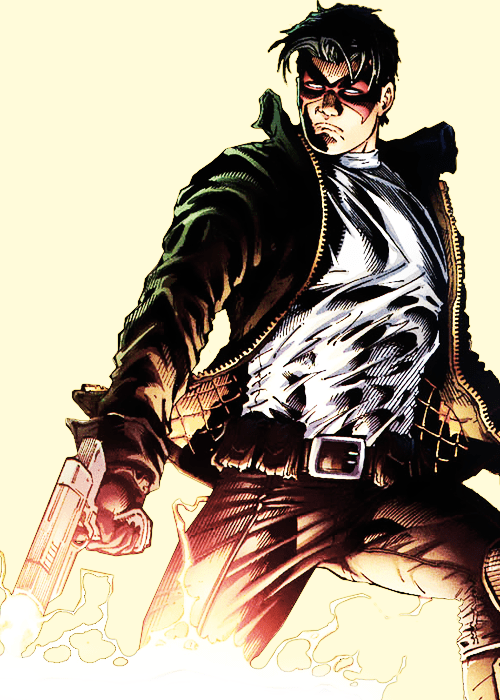
The post-resurrection Jason Todd
And then Jason came back. Judd Winick’s “Under the Hood” story resurrected Jason, his identity being revealed in “Batman” #638. His resurrection was controversial not just because of his status as one of the characters people thought should stay dead, but because of how he was resurrected. It’s become something of a joke, but DC explained away the return as Superboy-Prime punching the walls of his reality prison and causing ripples in the fabric of time and space. I admit … it’s not good. Interestingly, in the afterward to the hardcover collection of “Infinite Crisis,” editor Jeanine Schaefer said Geofff Johns originally conceived of this Jason as the Jason of an alternate Earth, either Earth-Two or a world where he was the “Robin” to Deathstroke. I don’t know if this would have helped the initial reaction, but it would have been interesting.
The Jason of the post-resurrection era fluctuated wildly between dark anti-hero and flat-out villain. He was Punisher-level violent, and was at times seriously unbalanced; he once infiltrated Titans Tower to attack Tim Drake wearing a variation on the original Robin costume. He also imprisoned the Joker and kept him alive just to beat him over and over. He would swing back to anti-hero mode after “Infinite Crisis,” temporarily taking the identity of Nightwing and then Red Robin while on a multiversal quest in “Countdown.” But since even the comics right after “Countdown” ignored it, we can too.
After Bruce Wayne’s apparent death in “Final Crisis,” Jason tried to become Batman, and when that failed, he decided to take up the Red Hood mantle again, only now as dark and unbalanced as he had ever been. He killed wantonly, had a sidekick who was one of Professor Pyg’s Dollotron victims, and once again had red hair. Grant Morrison was taking aspects of all of Jason’s pasts to make this new version. His last appearance before “Flashpoint” once again rebooted the DC Universe had him and Scarlet, his sidekick, escaping Dick Grayson Batman and Damian Wayne Robin in a helicopter.
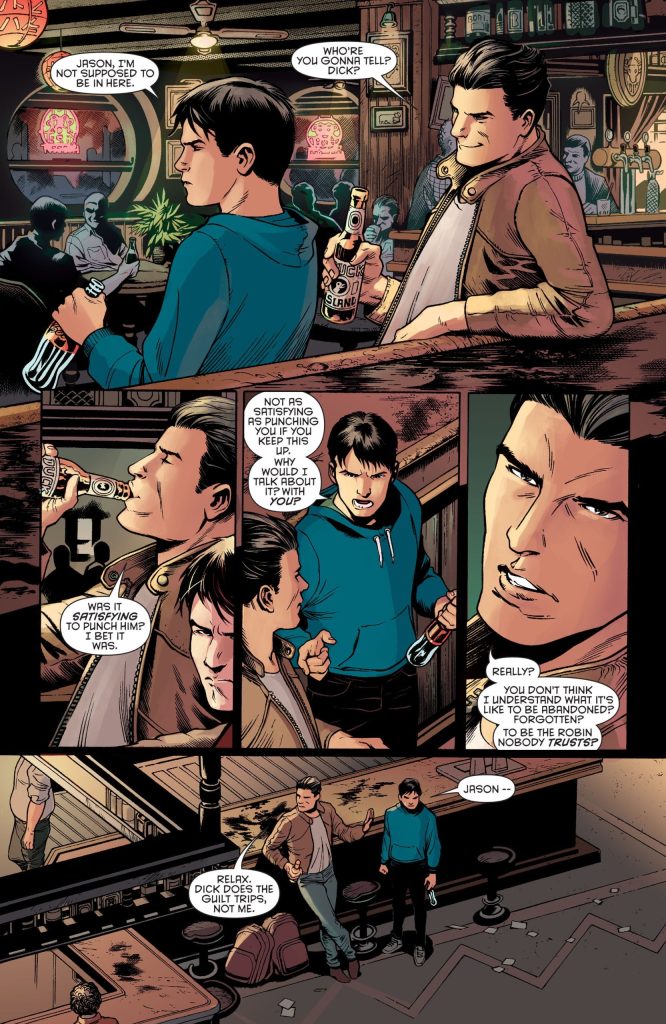
The New 52/Rebirth Jason Todd:
“You don’t think I understand what it’s like to be abandoned?”
When DC’s New 52 initiative started, Jason Todd was returned to a more traditional anti-hero role. He was still on the outs with most of the Batman family, but he was no longer the unbalanced rogue he was in his last days of the previous continuity.
Jason’s origin was retooled a third time, with minor tweeks to the second origin. He was discovered by Batman while trying to steal medicine from Leslie Thompkins’ clinic. There was one wild backup story where the Joker took credit for orchestrating Jason’s entire life as some sort of game, but the Joker is an unreliable narrator at best, and that has been, blessedly, ignored. Jason’s father was still a small-time hood killed by his boss, but that boss was now the Penguin, not Two-Face. And Jason’s resurrection was brought about purely by Talia al Ghul and the Lazarus Pit, which is much cleaner than the Superboy-punch version.
I’m not going to spend a lot of time here talking about what Jason has been up to over the past few years, but he has been played very much as a dark hero. He has walked the tightrope between hero and anti-hero, sometimes coming close to being welcomed back to the Bat family only to slip and have Batman cast him out again. Whether this is Jason’s fault or Bruce’s, well, that’s up to the reader and, frankly, the writer. Grant Morrison, who had made Jason a villain, told a redemptive arc in “Batman Incorporated” that has rarely been referenced elsewhere.
Jason has become the red-headed stepchild of the Bat family (See what I did there? I’m hilarious), always feeling on the outs even when the others are trying to welcome him back. In “Batman and Robin Eternal,” the weekly series that teamed the various previous Robins together for a globe-trotting adventure, Jason’s view of himself, even years after being Robin, was laid bare.
“You don’t think I understand what it’s like to be abandoned? Forgotten? To be the Robin nobody trusts?” That is the keystone to Jason Todd as a character as he is now. He’s looking for validation from the people he fights, and it seems neither side is willing to blink. He’s Batman’s greatest failure as well as one of the people who holds many of his hopes. He is the prodigal son, and who knows when and if he will ever really return home.

